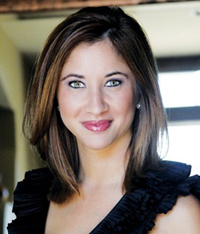Television personality and AZfoothills.com columnist Nadine Toren is scouring the area, finding savvy Valley features, bringing readers “on the scene.” Every day she’ll introduce you to celebrities, athletes, and give you an inside look into local events and hot spots. She'll touch on topical issues, and keep AZ fans posted on all the big talkers around town.

Does your man talk with his hands? Do you cross your hands when you speak? We're decoding the secrets behind body language.
“Movement is like a third base umpire throwing in signals. There’s a complete language going on beneath the scenes,” said Theroux.
Julie Theroux has been studying body language for many years. She says you can read a person like a book based solely on movement, expression, and pitch.
Think about it. How often are you in conversation and find your counterpart clearing their throat? Well, that’s not a good thing; in fact, Theroux says it’s a sign of deception. That’s because when someone lies, their mouth tends to dry up causing them to clear their throat, lick their lips, or stutter.
However, consider this. Experienced liars often raise their pitch when talking.
“Look for a change in tone; it likely means someone is not telling the truth,” she said.
Your hands also play a big role in conversation.
Theroux says holding up one finger can come across as being defensive, and raising your entire hand simply means “stop.”
“ It’s non-verbally pushing someone away.”
On the flip side, Theroux says hands facing inward is a sign of confidence; the person is welcoming the conversation. But if you’re chatting with someone crossing their arms, it means they are hesitant, uninterested, and done with making dialogue.
“You can always hand something to someone; it will open up conversation.”
And here’s some more body language lingo.
Hands on the hips equal dominance; someone determined to hold their ground.
Resting your chin on your hand equals boredom; the conversation has gone bland.
Resting a finger on your temple means someone is trying to process what’s being said; they’re insinuating they need more information.
Sitting with your legs crossed can mean one of two things depending on which direction they’re facing. If your legs lean towards your subject, you’re radiating confidence; but if they’re crossed away, you’re feeling timid and protecting your space.
“You can alter a conversation going downhill by changing your tone or subject of discussion.”
Eyes also have a story to tell.
Direct eye contact is a plus, but when you exhibit a fixed gaze, you’re likely trying to convince someone of something because you’re being dishonest. Theroux says it’s the same for excessive blinkers; your eyes flutter due to a rise in blood pressure—a sure sign you’re not completely telling the truth.
“A normal blink rate is 6-8 per minute.”
Also, where we look has meaning. Theroux says gazing up and to the left means a person is pulling from facts, while those staring up and to the right, often means a person is making up information.
In addition, eyes are an indicator of whether a person is being genuine. A false smile is often paired with unbalanced eyes; while when you truly grin, your eyes tend to be balanced and light up.
“This is a key sign in relationships.”
And speaking of relationships, a guy’s body language can say a lot about their feelings for a potential mate. An interested man will often look at you naturally, raising their eyebrows--that means they’re willing to hear more. They’ll also lick their lips—a sign of sensuality. (Go figure!)
So next time you’re in convo, look beyond what the person is saying. You just might find more meaning in the discussion.
To learn more about Julie Theroux, visit www.aboutfacereading.com.

